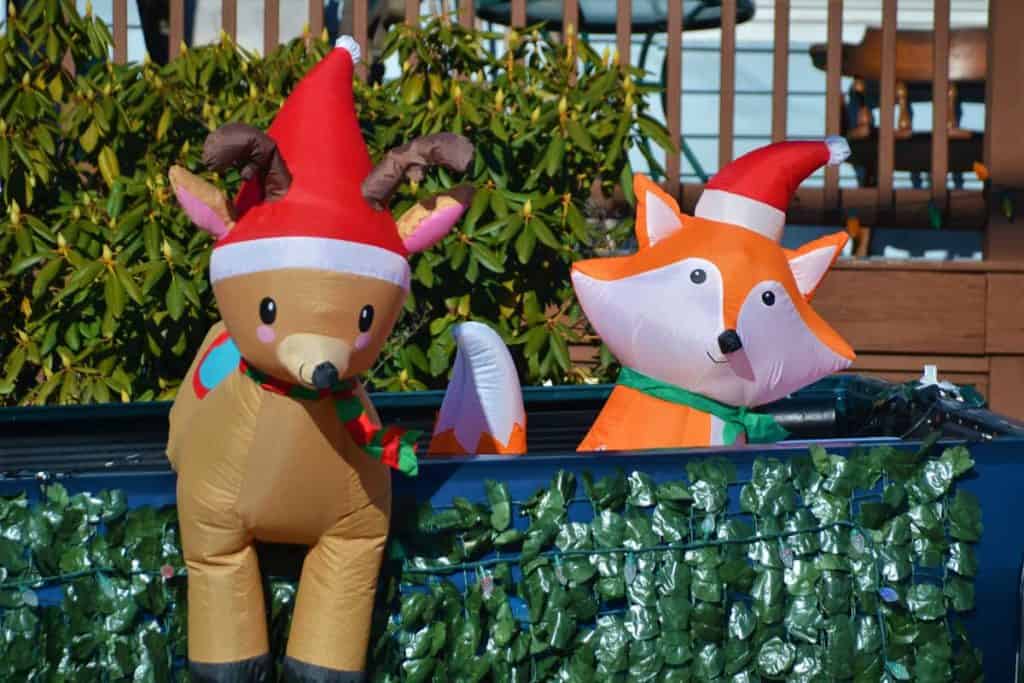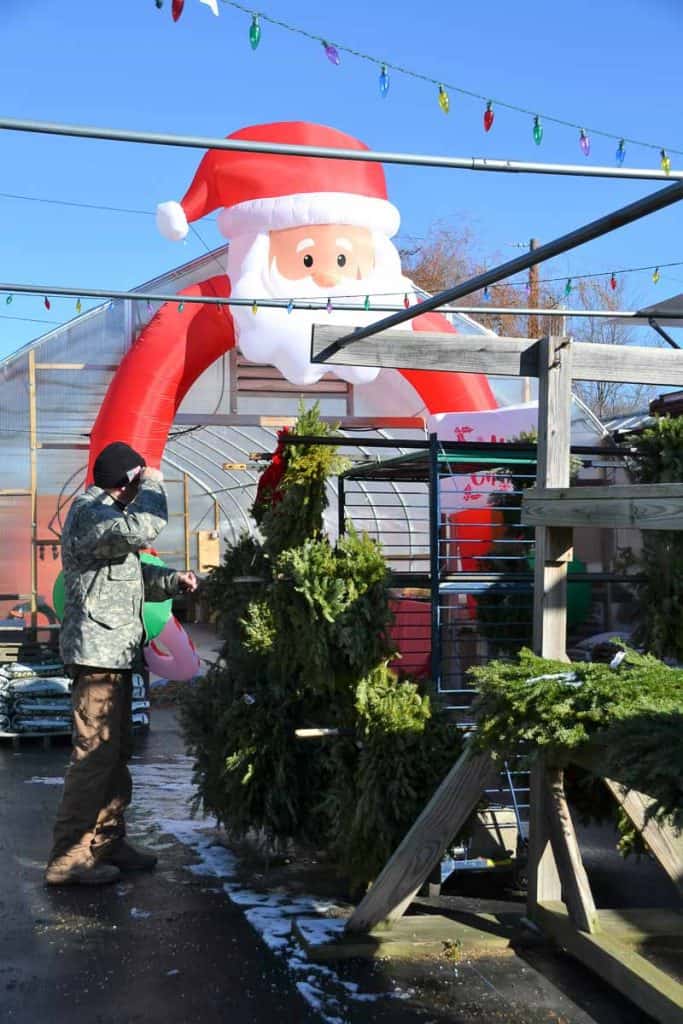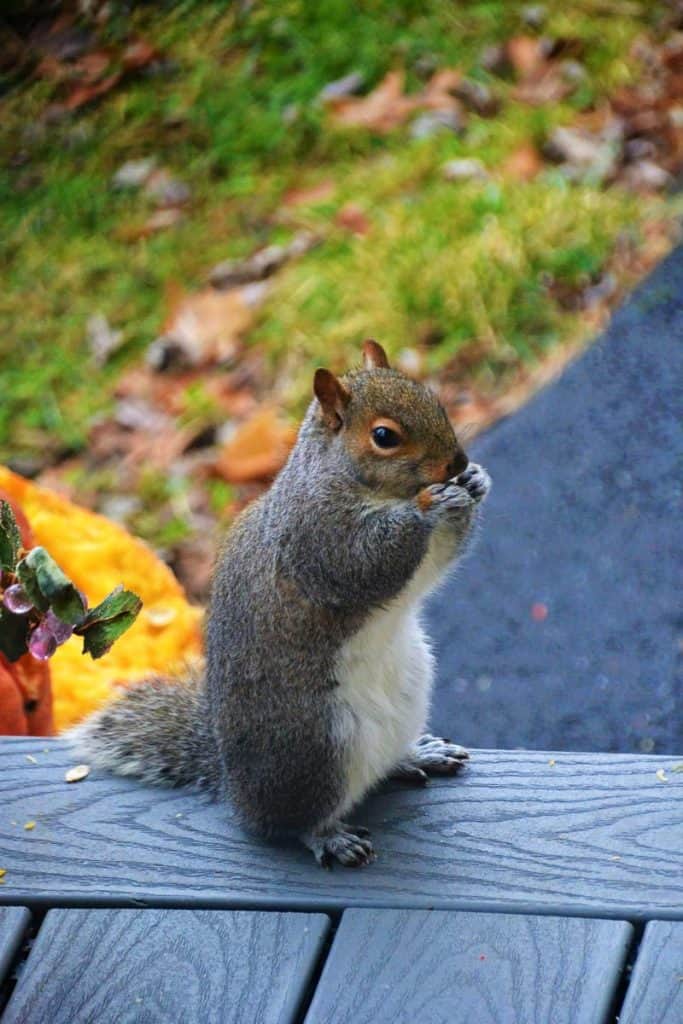Here’s what’s blooming in town this week to make your walks more enjoyable
Happy holidays to everyone! Many people are celebrating Christmas and Hanukkah this week, and bright lights are seen on the menorah at Town Hall as well as the tree in the rotary. Candles beam in windows along with lights on so many woody plants, evergreen and deciduous.
Wreaths on doors, windows and the light posts in town were joined by many wreaths on veterans’ graves on Saturday. The Wreaths Across America event reminded me of my late cousin Carole Cook, who taught school in Jonesport, Maine, and spent much of November and December, along with many others in her town and surrounding area, making wreaths from balsam fir local to the area. Many of the wreaths hung along the East Coast of the United States originated in the northeast portion of Maine, especially Washington County, where Carole lived.
A very lovely native plant of shady forest floors is the wintergreen (Gaultheria procumbens), also known as checkerberry. I have recently seen it sold as an indoor holiday plant, where its deep green leaves and bright red berries display the colors of the season. The leaves and berries both have a strong wintergreen aroma, and the berries have been used as a flavoring for many years. You may see it occasionally under pines in Breakheart Reservation and other woods here as well as farther north. The little potted plant I bought recently was confused by the unseasonably warm temperatures in my kitchen, and while it has several ripe berries, a few white bell-shaped flowers have also bloomed. The expected bloom time outdoors is usually May, although fluctuating temperatures may occasionally result in flowers in early to mid-fall as well. The deep green leaves sometimes turn burgundy in the fall, especially young foliage that emerged in summer – my indoor plant has some green leaves as well as some that have turned.
My maternal grandmother, who lived near Saugus Center, loved wintergreen and always kept the pink Canada mint in all seasons. Many Saugonians will remember this pink candy made by Necco for so many years. She would also pick a leaf or berry of wintergreen and chew it if she encountered the plants in the woods.
While evergreens are usually front and center in our thoughts of wild decorations for Christmas, deciduous trees and shrubs can also add to the winter ambiance and be festive in their own way. Red twig dogwood, a shrubby relative of the flowering dogwood tree (Cornus florida) that has been very popular in gardens as a May blooming native tree, is known for its twigs that turn red in the winter. Two species, one native (Cornus sericea) and one from Asia (Cornus sibirica), are known for this decorative characteristic. In both species, the branches do not have vivid colors in the summer – when chlorophyll develops along with emerging leaves in the spring, chlorophyll also develops in the bark of the branches and covers the red pigments that stand out in late fall and winter. In addition to being valued as a garden plant, florists sometimes sell cut branches to use in outdoor arrangements for the holiday season. The white flowers in June are pretty but not particularly showy, and in September these plants have white fruit. Our native red twig dogwood, also sometimes called red osier dogwood, often grows along streams and rivers and does not mind soggy soil. It is sometimes planted on pond and stream banks for erosion control.
Nurseries more often sell the Siberian species of red twig dogwood, also known as white dogwood (Cornus alba) for its flowers and fruits. The fruits can also be pale blue. Especially popular in gardens is a compact form with variegated leaves (white edged) called ‘Ivory Halo’ dogwood (Cornus alba ‘Ivory Halo’). A third species with reddish bark, which originated in Europe, is often grown in gardens on that continent but less often in the United States. That dogwood, called common dogwood or sometimes bloody dogwood (Cornus sanguinea) for the reddish tinge to the stems, also has white flowers in June, but the fruit is very dark purplish or black.
Editor’s Note: Laura Eisener is a landscape design consultant who helps homeowners with landscape design, plant selection and placement of trees and shrubs, as well as perennials. She is a member of the Saugus Garden Club and offered to write a series of articles about “what’s blooming in town” shortly after the outbreak of the COVID-19 pandemic. She was inspired after seeing so many people taking up walking.






